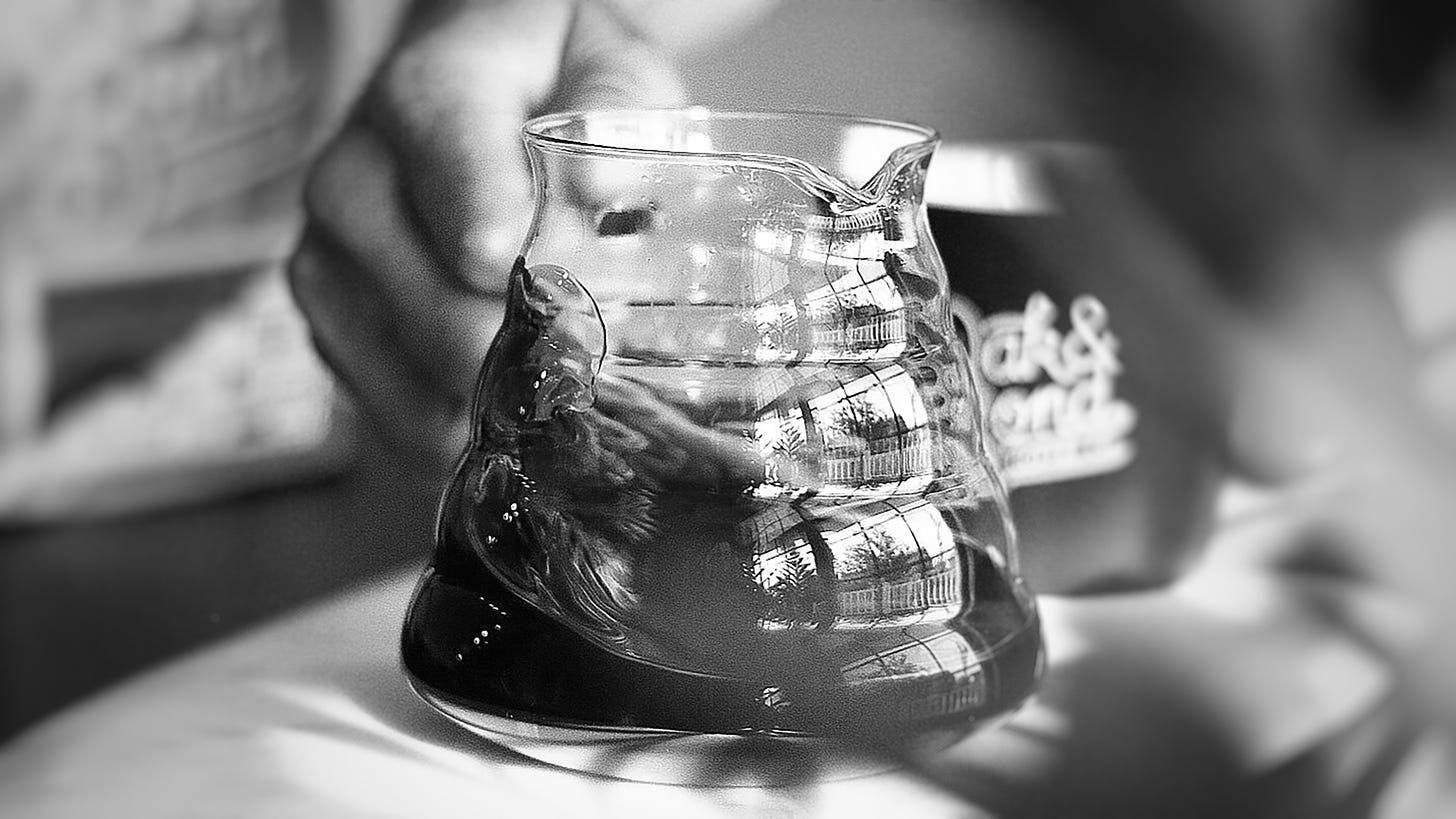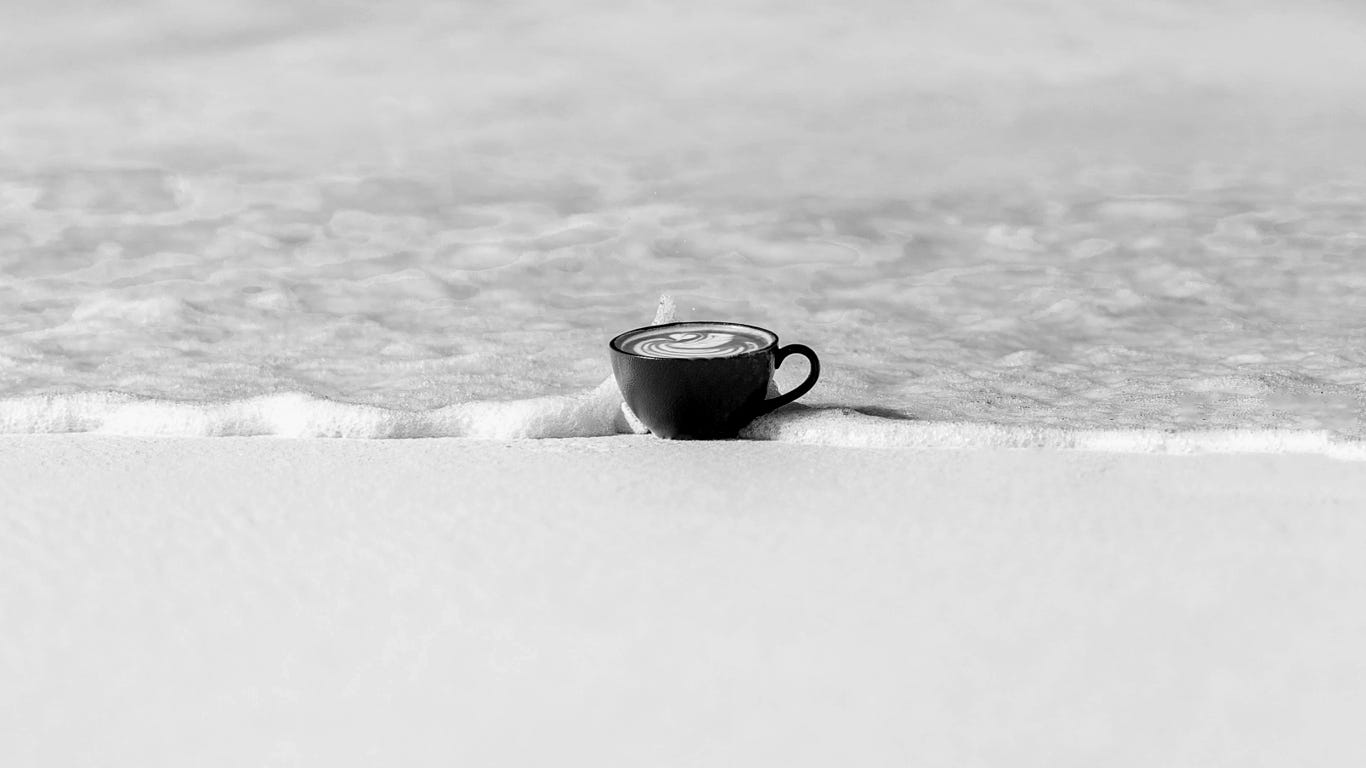Coffee People Talk the Fourth Wave
Market research thinks we're entering coffee's fourth wave. But are we? I asked some folks.

Like many of you, I read the recent article by market research company Mintel on a supposed fourth wave of coffee with some skepticism—or cynicism, if we’re being more accurate. If you follow the Pourover or read my weekly news roundup for Fresh Cup Magazine, you’ll know the article I’m talking about.
Mintel thinks that the US is entering a fourth wave of coffee, epitomized by cold drinks, home-based baristas, TikTok influencers, and more brands taking “a less serious approach to coffee.”
The article makes some salient points—coffee brands are taking a less serious approach to coffee, cold coffee drinks are becoming ever more important—but these feel to me like trends rather than something wholly new and different, as the last three waves were. The whole thing also felt like it was written by somebody from outside the industry—which it was—and that felt like it was lacking some insight.
Not feeling capable of filling this gap myself, I reached out to a selection of coffee industry folks, from business owners to writers to an actual TikTok star, to see what they thought the fourth wave of coffee will be (if anything).
It seems I wasn’t the only one thinking about this stuff.
But first, what are all these waves I keep talking about?
Trish Rothgeb, co-founder of Wrecking Ball Coffee, coined the term “third wave coffee” in 2003 in an article for the Roaster’s Guild newsletter, alluding to feminism’s three waves. I was going to give a summary here, but then I realized that I had a ready-made description from one of my respondents.
“My mental map for this has always been to think of the first wave as the big national brands that exploded in the early/mid 20th century when US coffee consumption was very high (A&P, Hills Bros, Maxwell House, etc—all covered really well in Mark Pendergrast’s book),” says Tony “Tonx” Konecny, co-founder of Yes Plz Coffee. “The second wave then is the emergence of a kind of ‘gourmet’ category that evolved into a specialty coffee industry that Peet’s etc are pioneers of.”
Konecny, who recently blogged about this topic himself, goes on to describe the third wave as “about the craft of roasting, brewing, and presenting the best possible coffee in the service of the growers and mills that produce it —to grow a niche that captures more value and equity for those producers and distinguishes itself from the more industrialized, commodified, and exploitative waves that preceded.”
Which seems to sum it up nicely.
So, the fourth wave.
Are we in it? Have we moved past “craft with a hyper-focus on quality” as Mintel put it, towards something else?
“Having worked in coffee for more than two decades, I currently see a shift in who’s participating,” says Phyllis Johnson, President of BD Imports and founder of The Coffee Coalition for Racial Equity. For Johnson, this shift could be evidence of a new wave. “ I notice a greater number of women in decision making roles and Black and Brown individuals entering the industry proudly and using their identity as their strength in reaching new consumers and building unique marketing strategies. I see the limits of coffee expanding beyond where it was just five years ago.”
David Lalonde of Rabbit Hole Roasters, on the other hand, views the whole concept of waves as not much more than marketing fluff. “Nowadays, I think the ‘waves’ are not only misleading, but also used for marketing more than for advancement of the coffee culture,” Lalonde tells me. “You have huge, unethical exporters/importers that will do 95% commodity coffee but label themselves as 'specialty' because of their rare quality buys, again, misleading the public and roasters.”
However, he admits that the terms aren’t going anywhere, and does agree with Mintel’s assessment that any new wave should make coffee less serious and more approachable. And it also needs to foreground equality and sustainability—any talk of fourth wave “needs to be about making coffee a suitable career here at home, and it needs to center farmers,” Lalonde says. “We can talk about gear all day, but if how we buy coffee doesn't change, in 20 years all we will have is Vietnamese robusta and semi-washed Brazilian coffee because they are the only two countries allowing farms to be profitable in the current economic landscape.”
This focus on sustainability and equity was echoed by Morgan Eckroth, star of @MorganDrinksCoffee on TikTok and runner-up at the recent World Barista Championship in Australia.
“My hope is that whatever we ultimately end up defining as the fourth wave will be focused more internally in the coffee industry,” Eckroth says. “Equitable and sustainable wages for baristas, better sourcing and focus of creating and retaining value at origin, and driving consumer knowledge are some of the things I hope are going to begin defining what comes next.”
Writer and #coffeefandom advocate Brian Gaffney sees the fourth wave developing in a similar fashion. “I expect the fourth wave to celebrate the relationships responsible for creating and sustaining quality, centering not just the product but the people who produce and prepare it,” Gaffney says. “I imagine the fourth wave will be more diverse and inclusive, ushering in an era of greater involvement from origin countries, increased quality and pricing options, and more engaging experiences designed to make production, preparation, and consumption more transparent, immersive, and interactive.”

Bartholomew Jones of Cxffeeblack saw the second wave as people-focused to the detriment of the product, all big comfy chairs and whipped cream, and the third wave as too product-focused to the exclusion of people. For Jones, the fourth wave should present a more holistic perspective, “where the experience in the cup is impacted by the experience of not just the person from a sensory perspective but from a dignity perspective, where communities are seen, where cultures are represented.”
A fourth wave should reflect a communal approach to coffee, Jones continues, “not just a transactional individual experience. So we’ll see way more coffee returning to what we see at origin, in Ethiopia particularly, where coffee is a community ritual, and I think we’ll see many communities creating their own spaces and representations for coffee.”
For Tony Konecny, we might not have even left the second wave yet. “I think a lot of what people lump into their overly broad ‘third wave’ checklists is stuff that was already getting checked off in the second,” he says. “And I think some of the small innovations or silly ideas people attempt to declare as the ‘fourth wave’ smell an awful lot like some seemingly savvy backslide towards the second (convenience, grocery shelf and virtual grocery shelf, retail middlemen, cans, influencers and branding upstaging the actual coffee).”
Innovation came up with Spencer Turer as well, albeit of a different sort. Turer, vice president at Coffee Enterprises, sees innovation not in the way Mintel thinks—“at-home is not a wave, it is a market segment” as he puts it—and more as a series of big questions. Innovation is “questioning processing and developing new techniques at origins, questioning brewing and developing new technology for consistent beverages, questioning our supply chain practices and incorporating social, environmental, and gender equity programs into our business operations.”
Ashley Rodriguez of Boss Barista wrote an excellent piece on the fourth wave just this week, and it’s really worth checking out to get her full thoughts on the subject. She told me that the jump to the fourth wave should be bigger than the things Mintel discussed: “I think we can't even imagine the fourth wave yet because I think the differences between first and second, second and third, were huge, and we haven't seen that big of a shift in coffee yet.”
“This is sort of hyperbole, but I think the fourth wave is supposed to be something we can't even fathom, like making coffee on the moon or some other ridiculous metaphor—obviously it won't be making coffee on the moon, but I think the idea that the fourth wave would need to be distinctly and utterly different is conveyed in that example.”
Maybe we shouldn’t be focused on the next wave until we’ve finished what we’re doing now. As Tony Konecny notes, “the third wave may have crested or splashed against the rocks in its messaging, but the work in moving more consumers into our niche remains vital and necessary.”
And to continue the wave metaphor, Phyllis Johnson puts it well: “What about the earth underneath the waves, sediment that has built up over a long period of time, does it still have impact and control? Of course, it does. Waves create a lot of noise, but I’ve found that at the end of the day the resources and power remain mostly unchanged. The wave is an indication that the most powerful must reconfigure itself and there are new opportunities for others.”
My own personal thoughts on the matter are constantly shifting, ever more now that I have read these other viewpoints. I like that equity and sustainability are at the forefront of everyone’s minds, and if anything can lead us into whatever the fourth wave becomes, I hope it’s that.
I’m just very glad nobody said anything about the metaverse or web3.




